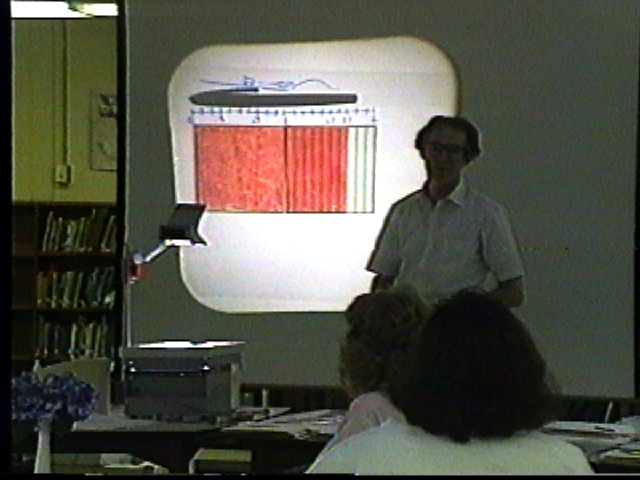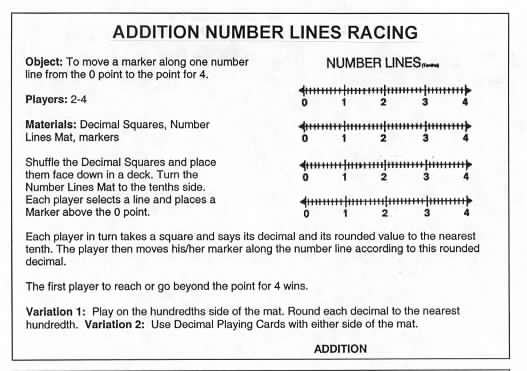1. Turn a standard sheet of paper lengthwise and place the square near the left edge as shown below.
2. Use the bottom edge of the square to draw a line and place a mark on the line for each of the 11 vertical lines of the square.
3. Label the left end point 0 the right end point 1 and write the decimal for the square under the mark which is at the end of the shaded part of the square. For example this is .3 for the square below. Place other decimal squares above the line and write the decimal for their shaded amounts.
4. When the unit length from 0 to 1 has been labeled with decimals for tenths measure the length of some small objects such as an eraser Decimal Playing Card etc.
Discuss the use of decimals to tell what part of a region is shaded (area) or to tell the distance (length) a point is from the zero point.


